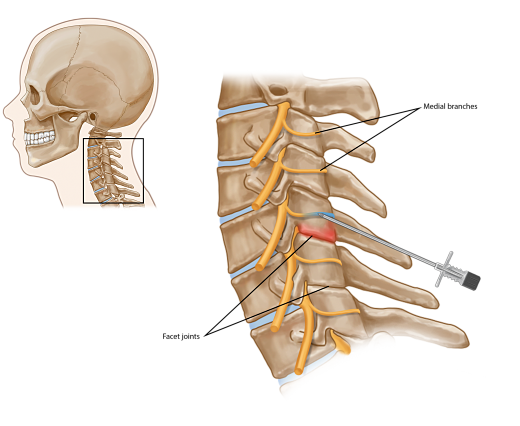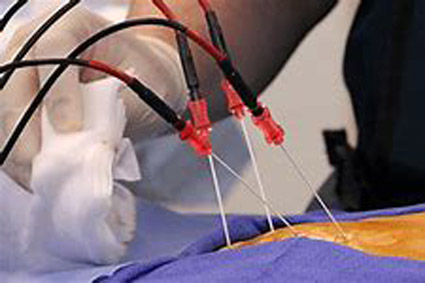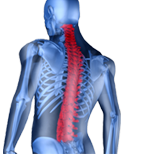Cervical Radiofrequency Ablation (RFA)



What are cervical facet joints?
Facet joints are found on both sides of the spine. Cervical facet joints are named for the vertebrae they connect and the side of the spine where they are found. The C5-6 facet joint, for example, joins the 5th and 6th vertebrae. Facet joints not only connect the vertebrae, but they also guide the spine during movement.
Medial branch nerves, located near facet joints, communicate pain from the facet joints. In other words, these nerves tell the brain when a facet joint has been injured.
What is cervical facet joint pain?
Cervical facet joint pain is a result of injury, either to the cartilage inside the joint or the connecting ligaments surrounding the joint.
Pain from an injured cervical facet joint may range from muscle tension to more severe pain. Depending on which facet joint is affected, the pain may occur in an area from your head down to your shoulder blade.
How do i know if i have cervical facet pain?
If you have pain in one or more of these areas, and it has lasted longer than two months, you may have cervical facet pain. Common tests such as x-rays or MRIs may not always show if a facet joint is the reason for your pain. The best way to diagnose facet pain is to block the pain signal in a medial branch nerve.
What is a cervical RFA ?
During this procedure, radio frequency energy is used to disrupt function of a cervical medial branch nerve, so that it can no longer transmit pain signals from an injured facet joint.
Procedure Detail
You may be given oral Valium or IV (intravenous) medication to help you relax. You may lie down on your side (with the procedure side facing up) or with face down, on the procedure table. The cervical spine is identified under fluoroscopy (a type of X-ray is used to ensure the safe and proper position of the needle). A local anesthetic is used to numb your skin. After the numbing medicine takes effect and with the assistance of a special X-ray machine called a fluoroscope, the doctor will insert a special radio frequency needle. You will feel some dull pressure but not pain. After confirming that the needle tip is in position, a special needle tip (electrode) is inserted. Again, the proper location of the needle is confirmed by fluoroscopy. Using electrical stimulation, the doctor will verify the correct nerve. You will feel a tingling sensation similar to hitting your "funny bone." You may also experience some muscle twitching. The needle tip is then heated by electric current which is passed using the radio frequency machine for 60 seconds. This will numb the area where the medial nerves are located.
Post RFA Procedure
After the procedure, you may experience some muscle soreness for a few days. If so, you may want to apply ice or a cold compress to the affected area. Do not drive for the remainder of the day. Please have an adult drive you home or accompany you in a taxi or other public transportation. Depending on how you feel, you may resume normal activities and return to work the following day. You may feel sore for one to four days. This is normal, and may be caused by muscle and nerve irritation. Your neck may feel numb, weak, or itchy for a couple of weeks. Sometimes the neck may feel numb and very sensitive to touch which may last 4-6 weeks. A full pain relief normally takes two to three weeks.
How long can I expect pain relief?
You may have pain relief for 6-12 months. Nerves regenerate after an RFA, but how long this takes varies. Your pain may or may not return when the nerves regenerate. If it does, another RFA can be done.
Global Pain Care © 2017 All rights reserved.



